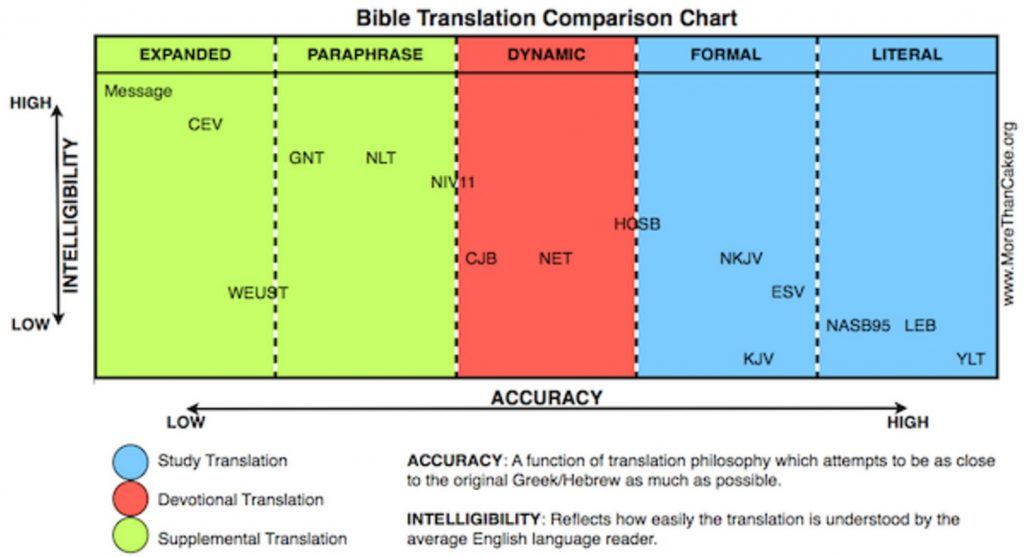This post is a little bit about the basics of the differences between Bibles.
Basically, the best way to understand God’s Word is to learn ancient Greek and Hebrew and use the originals as best as you can discern what they are. Even just staying in Hebrew for the Old Testament and Greek in the New Testament, that does not necessarily get you a pass on the problems. But few people can do that.
So I will explain some things about the different Bible versions. First of all, there is no perfect Bible translation. The theories and thinking behind the different versions are very starkly opposed, and that makes one Bible very different from another Bible, and depending on what your particular situation is, one Bible may be better than a different one for you. Personally, I recommend the King James Bible. Even though it has old English language, I still think it should be the version we use in English. I also believe (because I am a Baptist) that soul liberty and the priesthood of the believer makes the issue of Bible versions a personal one, and it is wrong to force everybody into a single mold. Some people may be coming from a foreign language and are using English as their second language and cannot handle the King’s English. I would not judge them.
To me, the issue IS THE BIBLE. Everything that is explicitly commanded in the Bible is obvious, but when we enter into areas that are not explicitly stated (and I continue to search for a very in the Bible that tells me clearly to use only one Bible version or group of manuscripts, and I don’t find that), so the reality is that we should not force what is not in the Bible.
Having said that, I also note that liberals and those with a more unbelieving (in the authority of Scripture) like the looser translations.
Literal Translations
We should just accept that the best Bible is the Bible that is most close to the originals. Having said that, we should also note that the Bible closest to the originals, but at the same time, is written in good English, because some “literal” Bibles try to be so close to the grammatical structure and word order that their verses don’t read like anything in normal English language.
Expanded Translations
So we have a spectrum, with the literal versions on one end, and the expanded or commentary types on the other end. The commentary type versions try to be so understandable in English that they fail on corresponding to the original languages closely, i.e. they are very understandable but not very accurate.
The literal translations go to the other extreme, in that they are very accurate, but not so easily understandable. We must remember we are talking about a book that is composed of 66 books written over thousands of years and from contexts and intermediate writers of dozens of situations, cultures, etc.
Comparison Chart
Note the groups:
Paraphrase: Message, CEV, WEUST, GNT, NLT, NIV
Dynamic: CJB, NET, HOSB
Literal: NKJV, KJV, ESV, NASB, LEB, YLT
The trend here is that the higher the accuracy, the higher the grade level which is necessary to understand them.
For suggestions on buying a particular Bible I refer you to the post where I took the image from, Why So Many Translations?
Advertisement
How to make your own theWord module is a walk through on theWord module creation. With this help, you can make your own modules.

